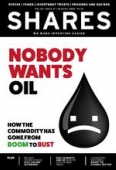Archived article
Please note that tax, investment, pension and ISA rules can change and the information and any views contained in this article may now be inaccurate.
Ways to play the Asia Pacific opportunity without relying on China

The coronavirus is wreaking havoc on health and economies around the world and there is increasing anger being directed towards China, widely accepted as the source of the coronavirus.
But the lure of investing more widely in Asia Pacific, a region with youthful demographics and low financial services penetration to name just two bull points, may still have appeal.
For those interested in investing in this region without significant Chinese exposure, Shares has screened the Investment Association’s Asia Pacific ex-Japan sector. We have identified funds with less than 20% of their assets listed in China, and less than 30% in Hong Kong on whose stock market many Chinese concerns trade.
WHY CHINA COULD BE OUT IN THE COLD
Having obfuscated around the origins of the disease and alerting the world to the virus’ human-to-human transmission, China risks being left in the cold.
Nations around the world, and many companies crippled by pandemic-induced supply bottlenecks, are already looking to reduce reliance on the world’s second biggest economy.
Once the global pandemic passes, the world may not be as keen to trade with or source products from China.
Investors could also decide to jettison Chinese investments too, due to the absence of strong environmental, social and governance (ESG) credentials in China, not to mention the country’s dubious tendency towards corporate accounting blow-ups, Luckin Coffee being the latest in a long line of scandals.
Actively managed Asia Pacific funds with limited holdings in China include BNY Mellon Asian Income (B8KT3V4), which has delivered a 10-year return of 105.41% according to FE Fundinfo. At 31 March, exposure to China was modest at 6.4% – the leading geographic allocations being to Singapore, Hong Kong, South Korea and Australia.
A top performer on a five-year view is Fidelity Asian Dividend (B8W5M02), a fund that scours this vast region for attractive dividend yields and capital growth potential; again, the exposure to China is contained to 15.4% (Hong Kong 22.4%, Taiwan 16.7%).
This fund also has a defensive bent. Manager Jochen Breuer looks for high-quality, cash-generative businesses with robust balance sheets and the process has a strong emphasis on capital preservation.
OTHER ASIA AVENUES
Using FE Fundinfo data, we have identified other funds with respectable long-run records that can help investors diversify risk away from China.
With a decade-long return of 105.8%, Schroder Asian Income’s (B5BJ7M1) latest geographical breakdown reveals weightings of 16.2% and 16.3% to China and Hong Kong respectively. It also has allocations as of the end of January to Australia (19.9%), Taiwan (14.3%), Singapore (13.7%) and South Korea (11.7%).
The largest three positions were Taiwan Semiconductor Manufacturing, Samsung Electronics and BHP (BHP), although positions still included Sands China, China Mobile and China Petroleum & Chemical.
Another name which fits the criteria is is the capital growth-focused Stewart Investors Asia Pacific (3018408), which has generated a 97.3% 10-year return.
Prospective investors should be aware that this fund will shortly (22 May) change its investment policy to include Japan and be renamed the Stewart Investors Asia Pacific and Japan Sustainability Fund.
DIVIDEND CUTS EXPECTED
Another way to access the region without going large on China is Jupiter Asian Income (BZ2YND8), the £603m unit trust managed by well-followed stockpicker Jason Pidcock. According to the April factsheet, China and Hong Kong exposure sits at 13.9% and 17.7% respectively, with significant allocations to Australia, Taiwan, Singapore and South Korea.
Top holdings do include China’s Tencent and Sands China, although there is also exposure to Korean handsets-to-freezers maker Samsung Electronics and Taiwan Semiconductor Manufacturing, the world’s top contract chipmaker.
Pidcock is in no doubt there will be a widespread cut in dividends due to the impact of the coronavirus. ‘However, we have to remember share prices have fallen by some way, and if dividends don’t fall as much, then yields will still look very attractive, particularly in comparison to government bond yields,’ he says.
Pidcock adds: ‘Ultimately, dividends have to be funded by earnings and the latter will be under pressure this year. At this stage we are hopeful that there will be an earnings recovery in 2021, which ought to be positive for dividends.’
INVESTING IN ASIAN SMALL CAPS
Investors with sufficient risk appetite might further diversify Asia Pacific portfolios by looking at smaller companies specialists. One option is Aberdeen Standard Asian Smaller Companies (B8GQ580), a long-term total return vehicle which invests in smaller companies based, or carrying out much of their business, in Asia Pacific countries excluding Japan.
Passive options
Other ways to diversify Asia Pacific portfolio exposure is through China-lite trackers. Examples include HSBC Pacific Index (B80QGT4) and iShares Pacific ex Japan Equity Index (B849FB4), the latter largely exposed to Australian, Taiwanese and South Korean equities with just 0.2% direct exposure to Chinese shares.
The top 10 is an eclectic mix of businesses ranging from Dutch chipmaker ASM International and Indonesian palm oil play M.P. Evans (MPE:AIM) to Chroma ATE, a Taiwanese provider of test and measurement equipment, and Kuala Lumpur-listed Shangri-La Hotels Malaysia.
Important information:
These articles are provided by Shares magazine which is published by AJ Bell Media, a part of AJ Bell. Shares is not written by AJ Bell.
Shares is provided for your general information and use and is not a personal recommendation to invest. It is not intended to be relied upon by you in making or not making any investment decisions. The investments referred to in these articles will not be suitable for all investors. If in doubt please seek appropriate independent financial advice.
Investors acting on the information in these articles do so at their own risk and AJ Bell Media and its staff do not accept liability for losses suffered by investors as a result of their investment decisions.
Issue contents
Editor's View
First-time Investor
Great Ideas
- Digital change expert Kainos remains a great pick
- Time to take profits on IT security group Avast
- Computacenter resilient but dividends are off the menu
- Luceco can move beyond ‘darkest hour’
- Buy ITV shares as advertising activity could soon pick up
- Travis Perkins can capitalise on homebuilding restart

 magazine
magazine









